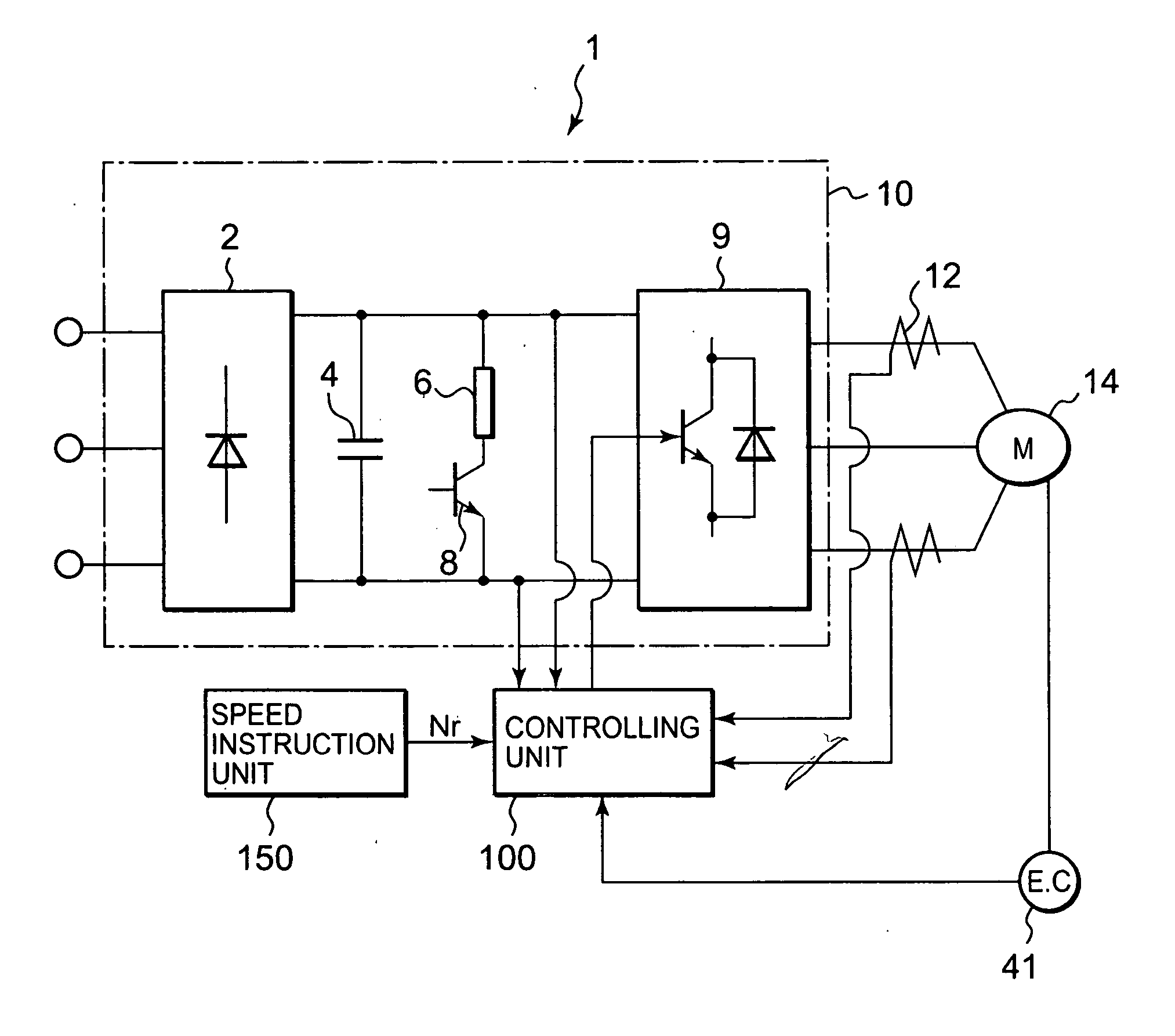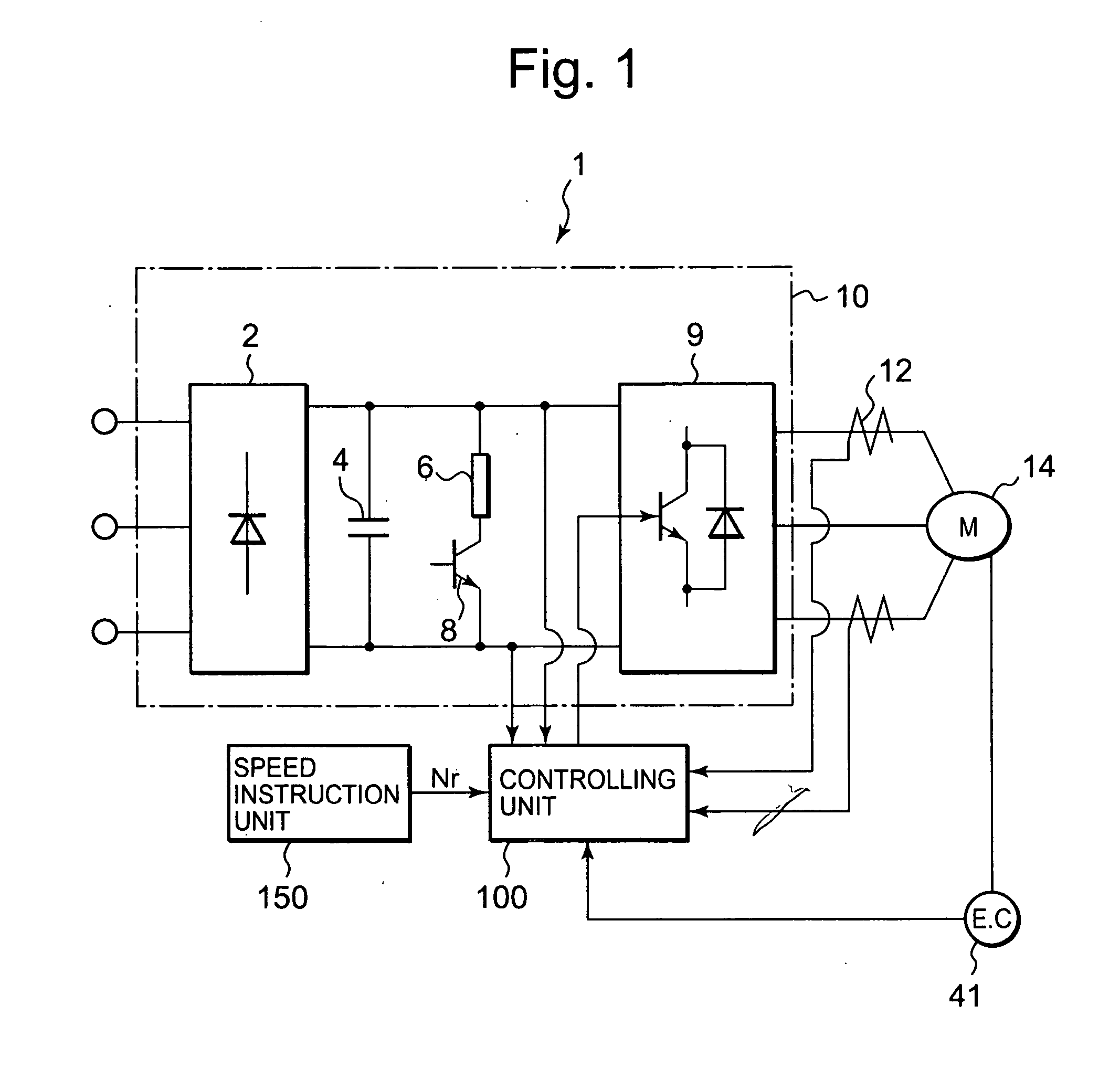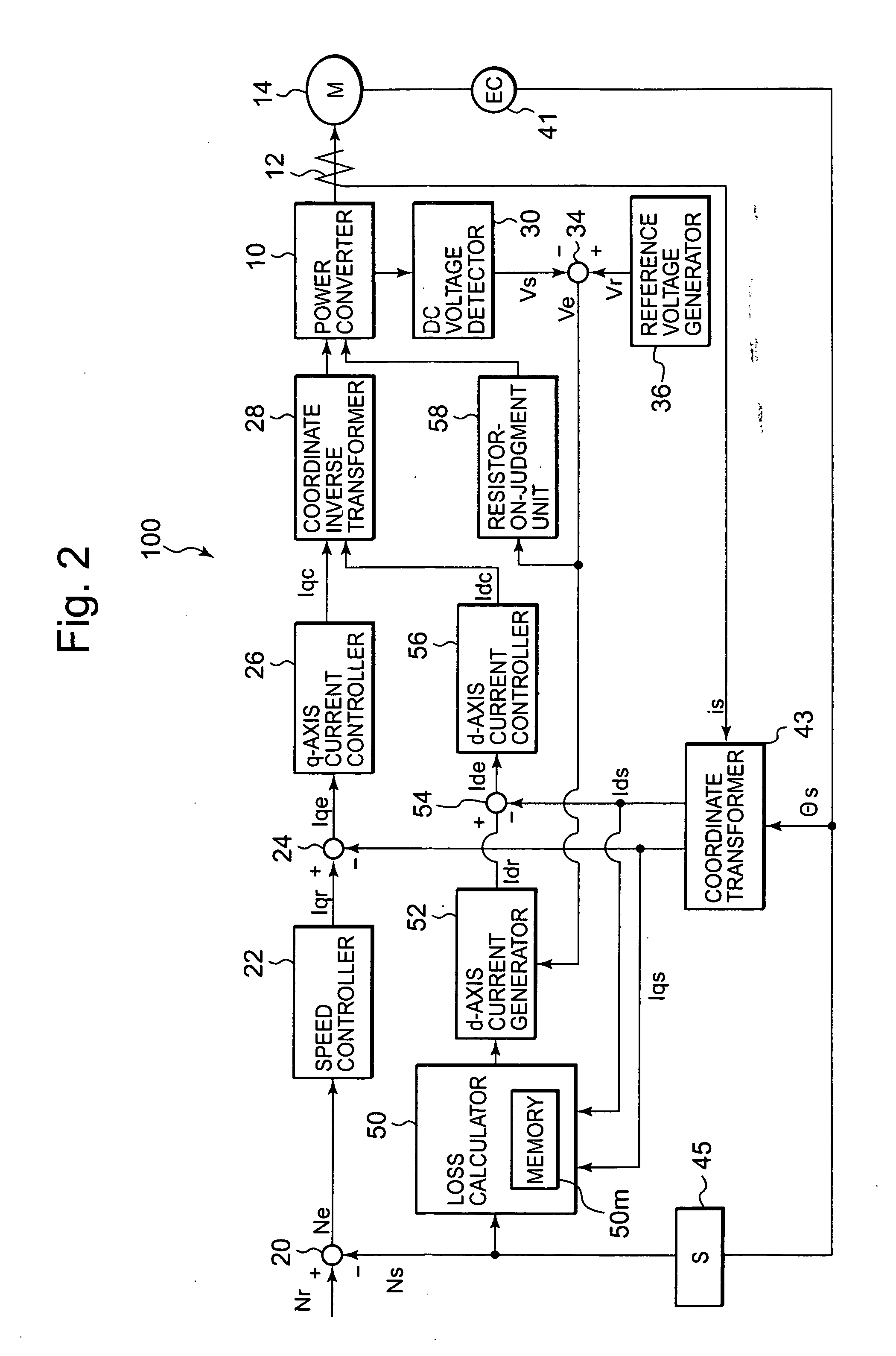Control device for permanent magnet synchronous motor
- Summary
- Abstract
- Description
- Claims
- Application Information
AI Technical Summary
Benefits of technology
Problems solved by technology
Method used
Image
Examples
embodiment 1
[0022] An embodiment according to this invention is explained, using FIG. 1 through FIG. 3. FIG. 1 is a whole block diagram illustrating a control device for a permanent magnet synchronous motor, FIG. 2 is a detailed block diagram illustrating the controlling device shown in FIG. 1, and FIG. 3 is a detailed block diagram illustrating the loss calculator shown in FIG. 2.
[0023] In FIG. 1 through FIG. 3, the control device for the motor includes a power converter 10, a controlling unit 100, a current detector (a current detecting means) 12 that detects current flowing into a motor 14 and inputs into the controlling unit 100 a current detecting signal is, and an encoder 41 that detects the rotational position of the motor 14 and inputs into the controlling unit 100 the position detection signal θs, and a speed instruction signal Nr, generated by a speed instruction unit 150, is inputted into the controlling unit 100.
[0024] The power converter 10 includes a converter 2 for converting t...
embodiment 2
[0049] Another aspect of an embodiment according to this invention is explained, using FIG. 5. FIG. 5 is a block, diagram illustrating an entire control device, for the motor, according to this aspect of the embodiment. In FIG. 5, the identical numerals with the ones in FIG. 2 refer to the identical parts, and those explanations are eliminated.
[0050] Given In as the rated current of the transistor configuring the inverter 9, there is an relation between the q-axis current and the d-axis current that flow into the motor 14, as described below.
In=(iq2+id2)1 / 2
[0051] From the above equation, the maximum flowable d-axis current instruction signal idmax is given below.
idmax=(In2+id2)1 / 2
[0052] As is shown in FIG. 5, a current limiter 103 that limits current in the d-axis current generator 52 is provided in order to prevent the d-axis current from exceeding the idmax.
[0053] Because the above-described control device for the motor is provided, so that current flows through the inverter...
embodiment 3
[0054] Still another aspect of an embodiment according to this invention is explained, using FIG. 6. FIG. 6 is a block diagram for calculating temperature rise in the motor windings, according to this aspect of the embodiment. In FIG. 6, the identical numerals with the ones in FIG. 3 refer to the identical parts and those explanations are eliminated.
[0055] In FIG. 6, the functional block for calculating temperature rise in the motor 14 windings includes: a primary temperature estimator 317 for calculating to output temperature rise in the winding of the motor 14 itself from the inputted average copper loss Pcave, being outputted from the average copper loss calculator 217; a secondary estimator 313 for calculating temperature rise in the iron core of the motor 14 from the inputted average iron loss Piave, being outputted from the average iron loss calculator 213; and an adder 315 for estimating temperature rise in the winding by adding the temperature rise in the winding itself and...
PUM
 Login to View More
Login to View More Abstract
Description
Claims
Application Information
 Login to View More
Login to View More - R&D
- Intellectual Property
- Life Sciences
- Materials
- Tech Scout
- Unparalleled Data Quality
- Higher Quality Content
- 60% Fewer Hallucinations
Browse by: Latest US Patents, China's latest patents, Technical Efficacy Thesaurus, Application Domain, Technology Topic, Popular Technical Reports.
© 2025 PatSnap. All rights reserved.Legal|Privacy policy|Modern Slavery Act Transparency Statement|Sitemap|About US| Contact US: help@patsnap.com



